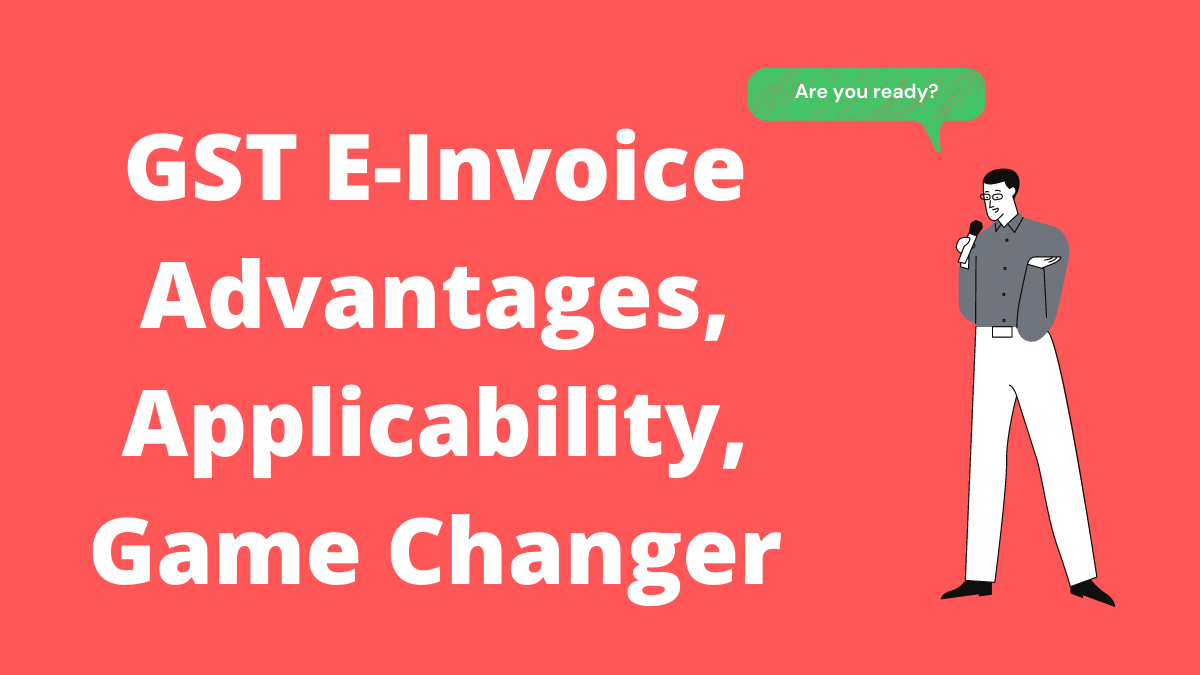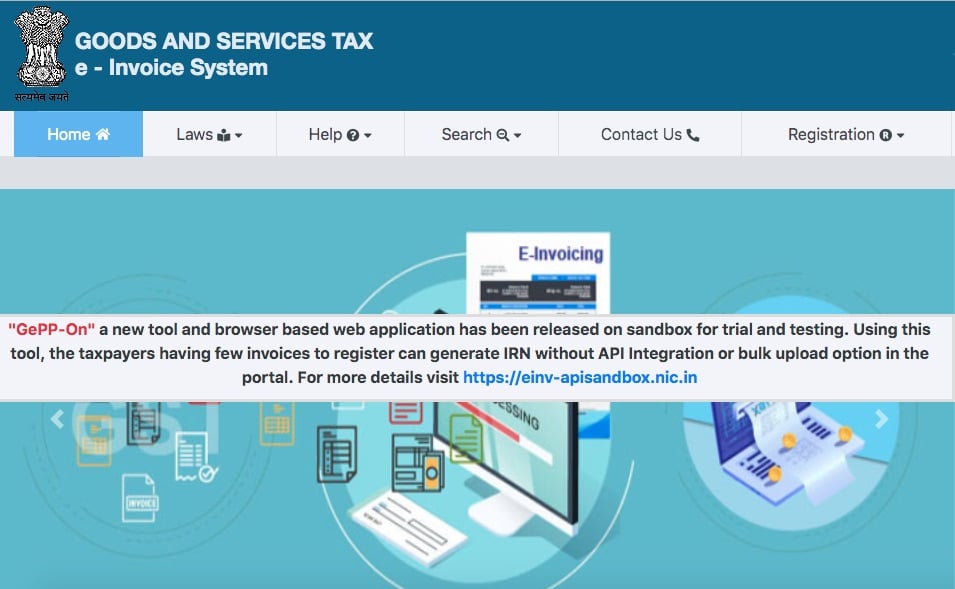GST e-invoice is the introduction of the digital invoice for goods and services provided by the business firm generated at the government GST portal (https://einvoice1.gst.gov.in/). E-invoicing under GST is a mechanism being introduced to curb tax evasion and enable an invoicing standard in India.
The main aim of e-invoice generation is to check GST evasion. After the successful rollout of GST, the government is now aiming towards the anti-evasion measures to increase revenue as well as compliance.
Advantages of GST E-invoicing in India
The benefits of introducing E-invoice generation under GST include:
- Auto-Populated GSTR 1 (for B2B invoices)
- Auto-populated Part A for Eway Bill generation (taxpayer will have to provide vehicle details in Part B to complete EWB generation
- Auto-sharing of uploaded invoices (on IRP) with the buyers for reconciliation.
Applicability of GST E-Invoice System
E-Invoice has been introduced in the country in a phased manner based on the Aggregate Annual Turnover of the companies.
Advertisement
Content in this Article
- The first phase – for companies with turnover more than Rs.500 CR on 1st October 2020.
- The second phase – for companies with turnover more than Rs.100CR on 1st January 2021.
- In third phase E-Invoicing is mandatory from 1st April 2021 for entities whose aggregate turnover exceeds Rs. 50 crore (GST Notification 05/2021-Central Tax)
Section 2(6) of the CGST Act: “(6) “aggregate turnover” means the aggregate value of all taxable supplies (excluding the value of inward supplies on which tax is payable by a person on reverse charge basis), exempt supplies, exports of goods or services or both and inter-State supplies of persons having the same Permanent Account Number, to be computed on all India basis but excludes central tax, State tax, Union territory tax, integrated tax and cess; “
GST System has also given a facility to check the applicability on the E-Invoice Portal (https://einvoice1.gst.gov.in/)
E-invoice can be generated only by suppliers. The recipients and transporters cannot generate E-Invoice. E-commerce operators can generate e-invoices on behalf of the sellers on their platforms.
E-Invoicing is applicable only to B2B Business to Business (including B2G –Business to Government) transactions.
B2B Supplies include
- Domestic supplies as well as Exports (including Deemed Exports),
- Supplies to SEZ B2B and
- Supplies through E-commerce Operators
E-invoicing is not required for B2C – Business to Consumer transactions. However, for taxpayers with AATO above Rs 500 Cr, the invoices need to have self-generated QR Code.
Import transactions are also not covered under E-Invoicing The exclusion from an E-Invoicing
The following entities are excluded from issuing e-invoice
- Insurance company
- Banking company
- Financial Institution
- NBFCs
- GTA
- Supplier of passenger transportation services
- Supplier of services by way of admission to the exhibition of cinematograph films in multiplex screens
- Special Economic Zones (SEZs) Units (Notified vide Notification No. 13/2020 and 61/2020- Central Tax)
Documents to be reported to GST System under E-Invoicing
- Invoice by Supplier
- Credit Note by Supplier
- Debit Note by Supplier
Bill of Supply, Delivery Challan and Job Work Challan are kept out of the scope of E-Invoicing.
Generating an e-invoice
- Invoice Creation – Invoice is created using an accounting or billing software.
- Invoice Registration Number (IRN) Generation: Supplier can generate a unique Invoice Reference Number (IRN) using a standard hash-generation algorithm. Generation of IRN by supplier is optional. In absence of IRN, the IRP system of government will generate the same.
- Upload on Invoice Registration Portal (IRP): JSON file for each B2B invoice (generated through the accounting software or any third party tool), along with the IRN, if generated is uploaded on the Invoice Registration Portal (IRP)
- . IRP Validation of Invoice Information: The IRP will validate the generated hash/IRN attached with JSON (if uploaded by the supplier) or generate an IRN and authenticate the file against the central registry of GST for any duplication. The IRN will be the unique identity of the E-invoice for the entire financial year.
- Digital Signature and QR Code Generation: Upon successful verification, the invoice will be updated with IRP’s digital signature on the invoice data and a QR code will be added to the JSON file.
- E-Invoice data transmission to E-Way Bill Portal and GST System: The uploaded data will be shared with the E-way bill system and GST system which will be used for auto-population of GST Annexures for GSTR 1.
- E-Invoice Receipt back to Supplier’s accounting system: The portal will send the digitally signed JSON along with IRN and QR code back to the seller. The invoice will also be sent to the buyer on their registered email id.
E-Invoicing is increasingly directed by governments across the world particularly due to GST evasion.
Tax leakage and fraud using fake invoices have been an issue the government is trying to battle even before the GST era. E-invoicing in India is anticipated to put an end to this. Real time invoice reporting discourages subsequent fraudulent changes/adjustments. Besides blocking the tax leakage, the implementation of the e-invoicing under GST shall be beneficial for the taxpayers as well.


